
How to Use LILYGO T-Higrow ESP32: Examples, Pinouts, and Specs
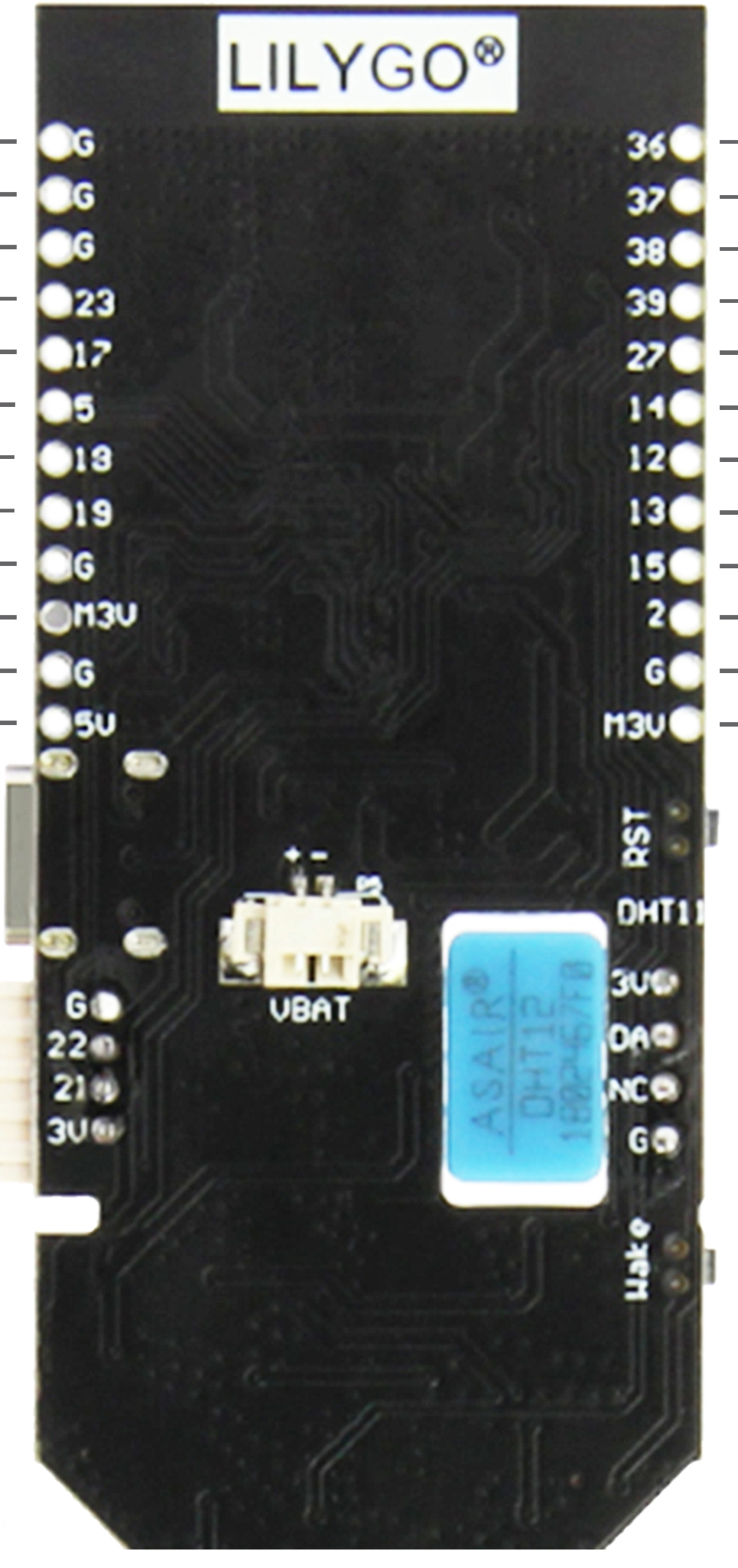
 Design with LILYGO T-Higrow ESP32 in Cirkit Designer
Design with LILYGO T-Higrow ESP32 in Cirkit DesignerIntroduction
The LILYGO T-Higrow ESP32 is a versatile development board designed for Internet of Things (IoT) applications. It is powered by the ESP32 microcontroller, which features dual-core processing, built-in Wi-Fi, and Bluetooth capabilities. The T-Higrow board is equipped with various sensors, including a capacitive soil moisture sensor, temperature and humidity sensor, and a battery management system, making it ideal for environmental monitoring and smart agriculture projects.
Explore Projects Built with LILYGO T-Higrow ESP32
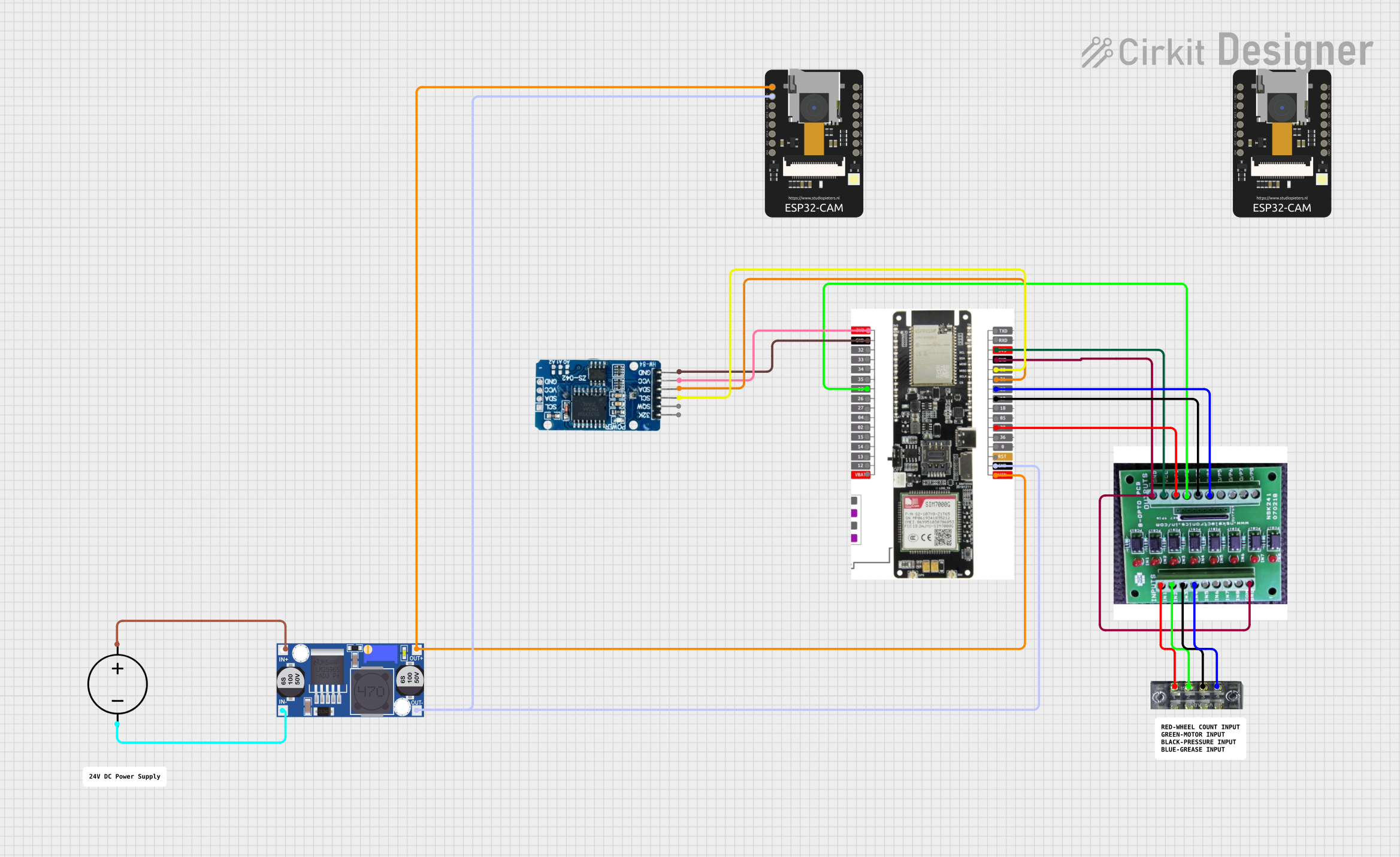
 Open Project in Cirkit Designer
Open Project in Cirkit Designer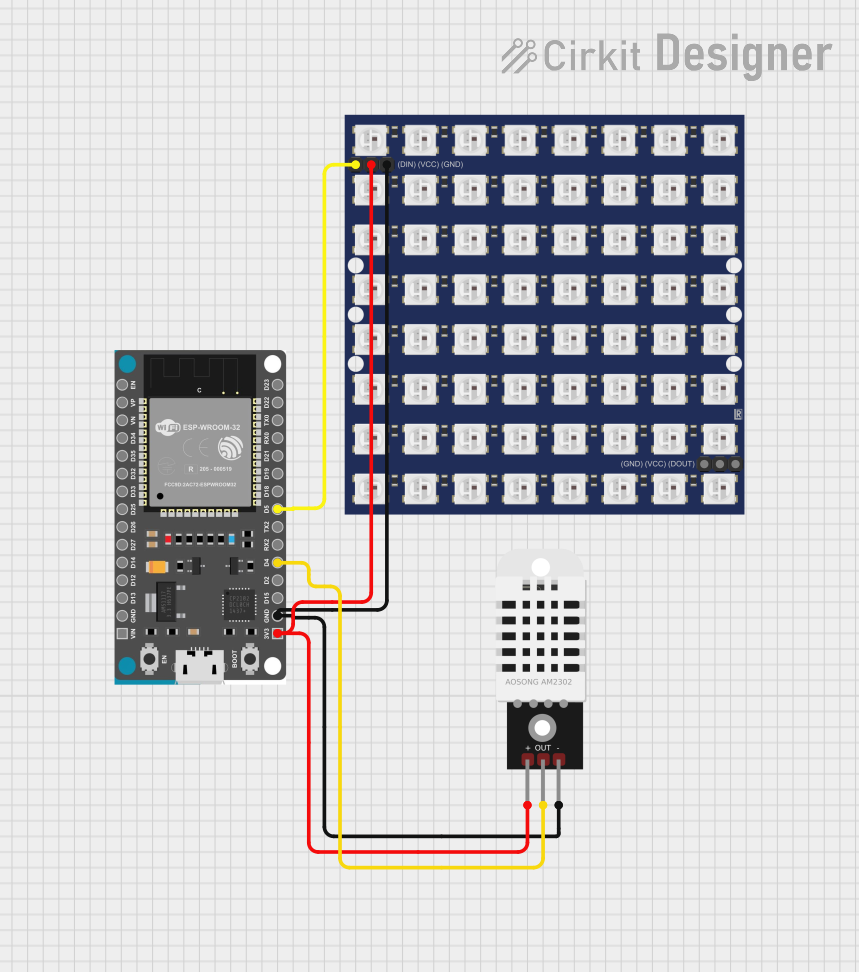
 Open Project in Cirkit Designer
Open Project in Cirkit Designer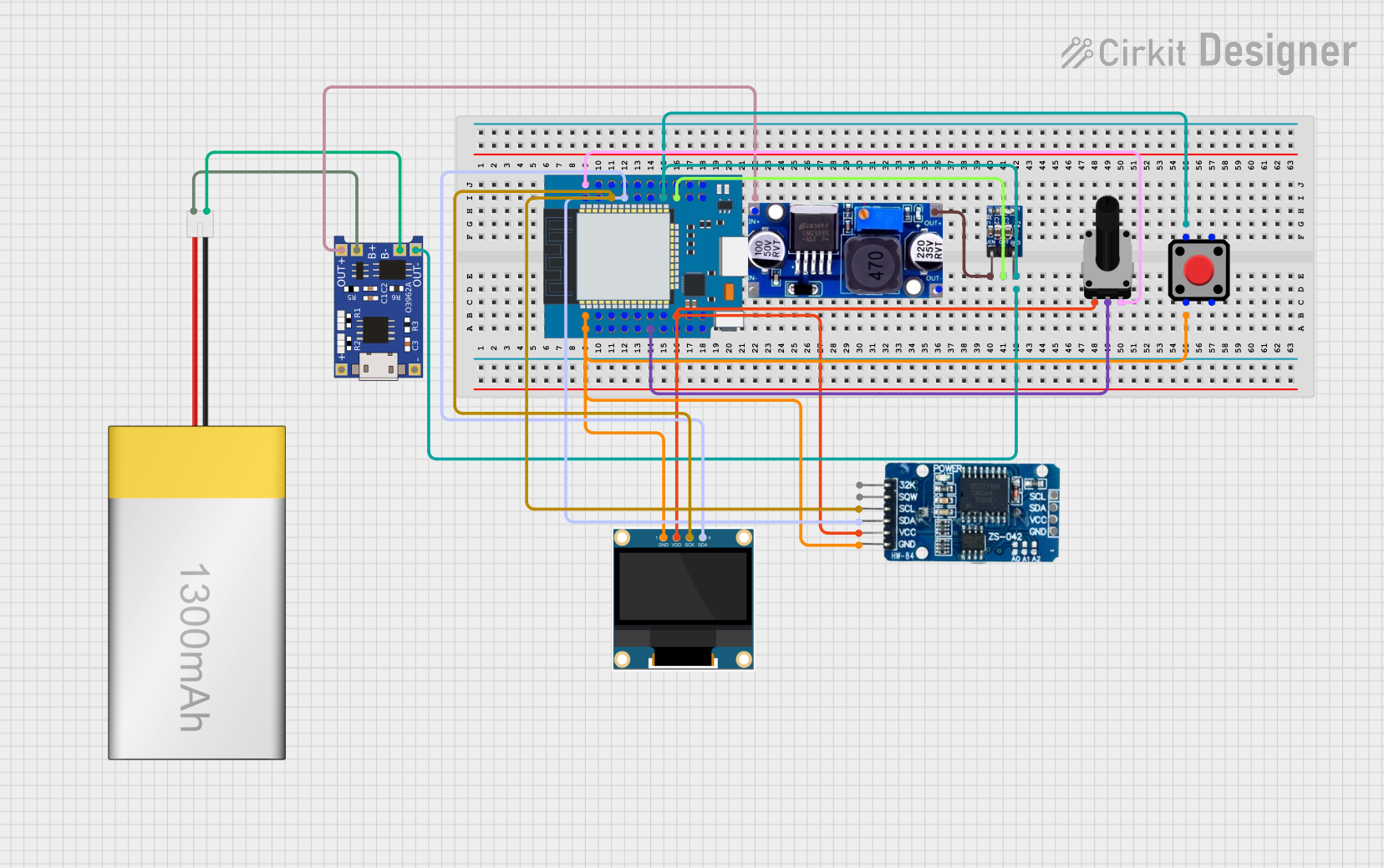
 Open Project in Cirkit Designer
Open Project in Cirkit Designer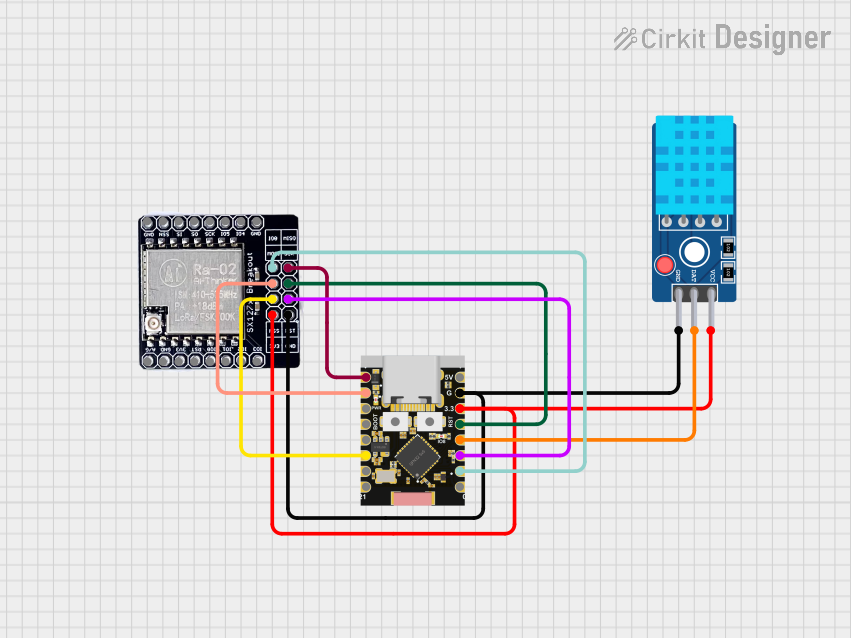
 Open Project in Cirkit Designer
Open Project in Cirkit DesignerExplore Projects Built with LILYGO T-Higrow ESP32

 Open Project in Cirkit Designer
Open Project in Cirkit Designer
 Open Project in Cirkit Designer
Open Project in Cirkit Designer
 Open Project in Cirkit Designer
Open Project in Cirkit Designer
 Open Project in Cirkit Designer
Open Project in Cirkit DesignerCommon Applications and Use Cases
- Smart agriculture and soil monitoring
- Environmental data logging
- IoT-based weather stations
- Home automation systems
- Educational projects and prototyping
Technical Specifications
The following table outlines the key technical details of the LILYGO T-Higrow ESP32:
| Parameter | Specification |
|---|---|
| Microcontroller | ESP32 (dual-core, 32-bit, Xtensa LX6) |
| Clock Speed | Up to 240 MHz |
| Flash Memory | 4 MB |
| Connectivity | Wi-Fi 802.11 b/g/n, Bluetooth 4.2 |
| Power Supply | 3.7V LiPo battery or USB (5V) |
| Battery Management | Integrated charging circuit for LiPo batteries |
| Sensors | Capacitive soil moisture sensor, DHT11 (temperature and humidity) |
| GPIO Pins | 10 (configurable for digital or analog input/output) |
| Operating Voltage | 3.3V |
| Dimensions | 50mm x 25mm |
Pin Configuration and Descriptions
The T-Higrow ESP32 features a compact pinout. Below is the pin configuration:
| Pin | Name | Description |
|---|---|---|
| 1 | GND | Ground |
| 2 | 3V3 | 3.3V power output |
| 3 | GPIO0 | General-purpose I/O (used for boot mode selection) |
| 4 | GPIO2 | General-purpose I/O |
| 5 | GPIO4 | General-purpose I/O (connected to soil moisture sensor) |
| 6 | GPIO5 | General-purpose I/O |
| 7 | GPIO12 | General-purpose I/O |
| 8 | GPIO13 | General-purpose I/O |
| 9 | GPIO14 | General-purpose I/O |
| 10 | GPIO15 | General-purpose I/O |
| 11 | BAT | Battery voltage monitoring |
| 12 | USB | USB power input |
Usage Instructions
How to Use the Component in a Circuit
Powering the Board:
- Connect a 3.7V LiPo battery to the battery connector, or power the board via the USB port (5V).
- Ensure the battery is properly charged if using battery power.
Connecting Sensors:
- The capacitive soil moisture sensor is pre-wired to GPIO4.
- The DHT11 temperature and humidity sensor is integrated and does not require additional connections.
Programming the Board:
- Use the Arduino IDE or ESP-IDF to program the ESP32.
- Install the necessary ESP32 board definitions in the Arduino IDE.
- Connect the board to your computer via USB and select the appropriate COM port.
Uploading Code:
- Press and hold the "BOOT" button while clicking "Upload" in the Arduino IDE to enter programming mode.
Important Considerations and Best Practices
- Power Supply: Always use a stable power source to avoid unexpected resets or malfunctions.
- Moisture Sensor: Avoid prolonged exposure of the soil moisture sensor to water to prevent corrosion.
- Battery Management: Use only compatible LiPo batteries to ensure safe operation.
- Wi-Fi and Bluetooth: Avoid using both Wi-Fi and Bluetooth simultaneously for power-sensitive applications.
Example Code for Arduino IDE
Below is an example code snippet to read data from the soil moisture sensor and DHT11 sensor:
#include <DHT.h>
// Define pin connections
#define SOIL_MOISTURE_PIN 4 // GPIO4 for soil moisture sensor
#define DHT_PIN 5 // GPIO5 for DHT11 sensor
#define DHT_TYPE DHT11 // Define the type of DHT sensor
DHT dht(DHT_PIN, DHT_TYPE);
void setup() {
Serial.begin(115200); // Initialize serial communication
dht.begin(); // Initialize DHT sensor
pinMode(SOIL_MOISTURE_PIN, INPUT); // Set soil moisture pin as input
}
void loop() {
// Read soil moisture value
int soilMoistureValue = analogRead(SOIL_MOISTURE_PIN);
Serial.print("Soil Moisture: ");
Serial.println(soilMoistureValue);
// Read temperature and humidity
float temperature = dht.readTemperature();
float humidity = dht.readHumidity();
// Check if readings are valid
if (isnan(temperature) || isnan(humidity)) {
Serial.println("Failed to read from DHT sensor!");
} else {
Serial.print("Temperature: ");
Serial.print(temperature);
Serial.println(" °C");
Serial.print("Humidity: ");
Serial.print(humidity);
Serial.println(" %");
}
delay(2000); // Wait 2 seconds before the next reading
}
Troubleshooting and FAQs
Common Issues and Solutions
Board Not Detected by Computer:
- Ensure the USB cable is functional and supports data transfer.
- Verify that the correct COM port is selected in the Arduino IDE.
Failed to Upload Code:
- Press and hold the "BOOT" button while uploading the code.
- Check that the correct board and port are selected in the Arduino IDE.
Incorrect Sensor Readings:
- Ensure the sensors are properly connected and not damaged.
- Verify that the soil moisture sensor is not submerged in water for extended periods.
Wi-Fi Connection Issues:
- Check the Wi-Fi credentials in your code.
- Ensure the Wi-Fi network is within range and operational.
FAQs
Can I use the T-Higrow ESP32 with other IoT platforms?
Yes, the board is compatible with platforms like Blynk, MQTT, and ThingSpeak.What is the maximum range of the Wi-Fi module?
The ESP32's Wi-Fi range is approximately 30 meters indoors and 100 meters outdoors, depending on environmental factors.Can I power the board directly with a 5V power supply?
Yes, you can power the board via the USB port using a 5V power supply.Is the board compatible with MicroPython?
Yes, the T-Higrow ESP32 supports MicroPython in addition to the Arduino IDE and ESP-IDF.